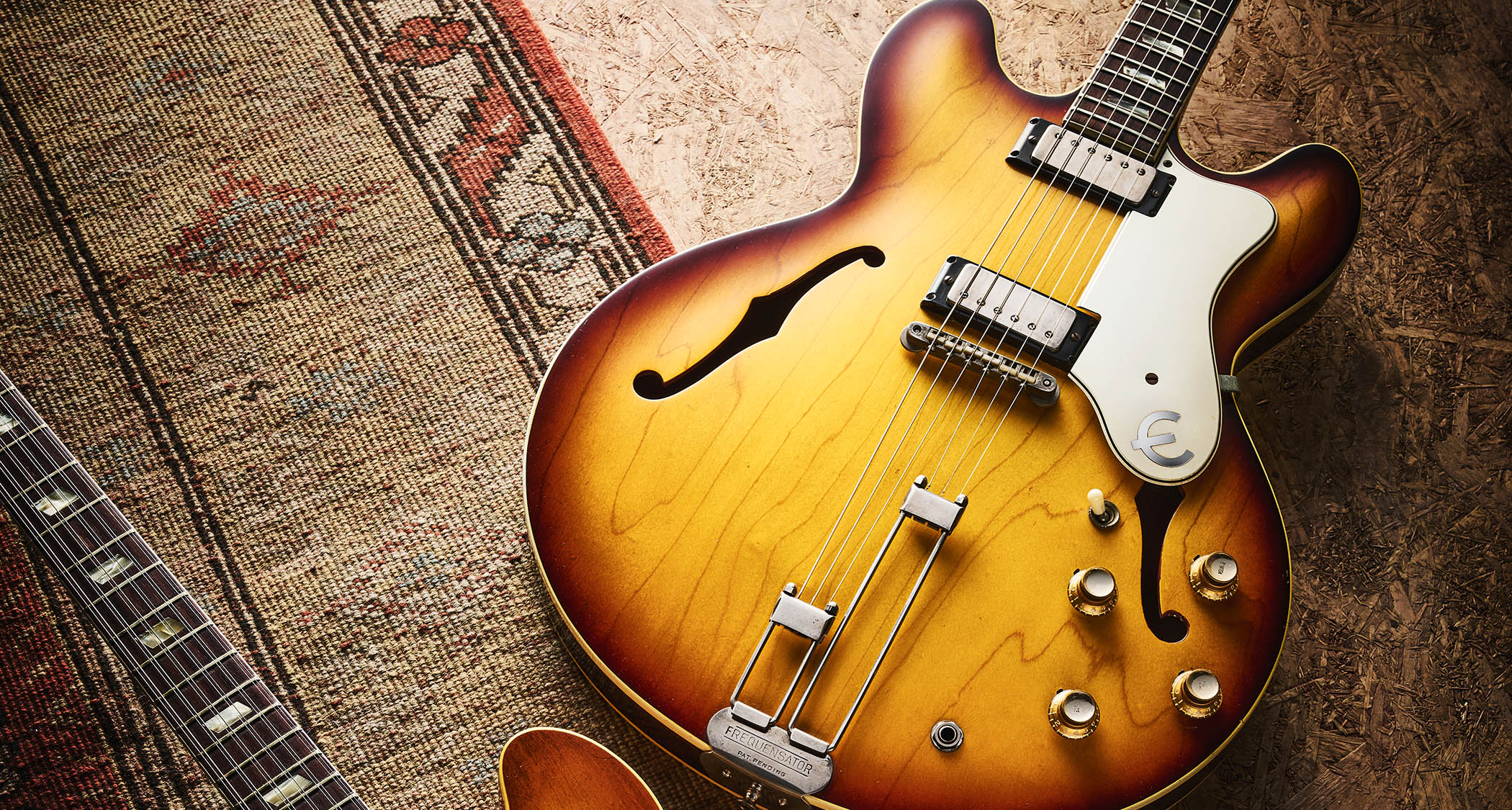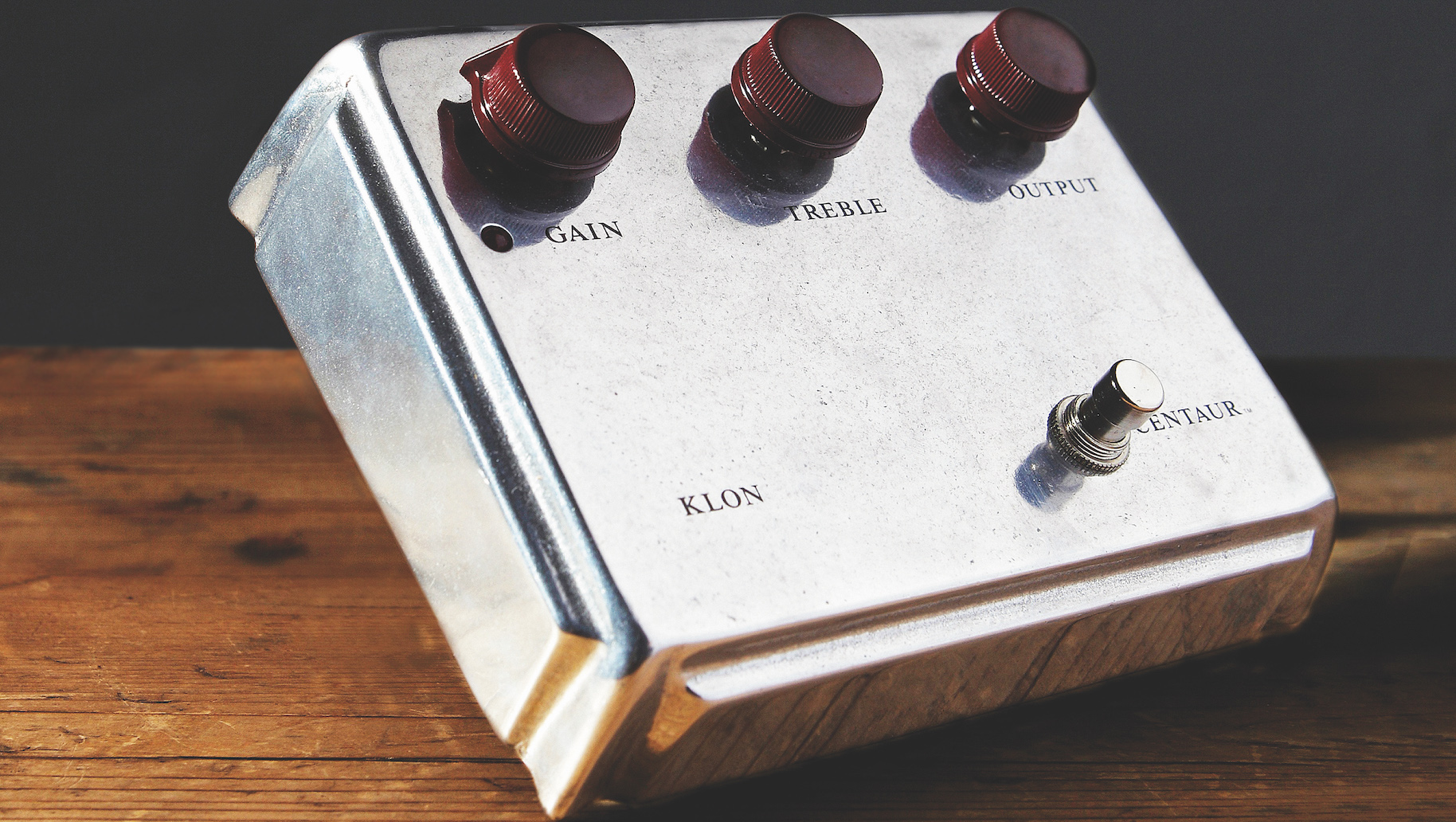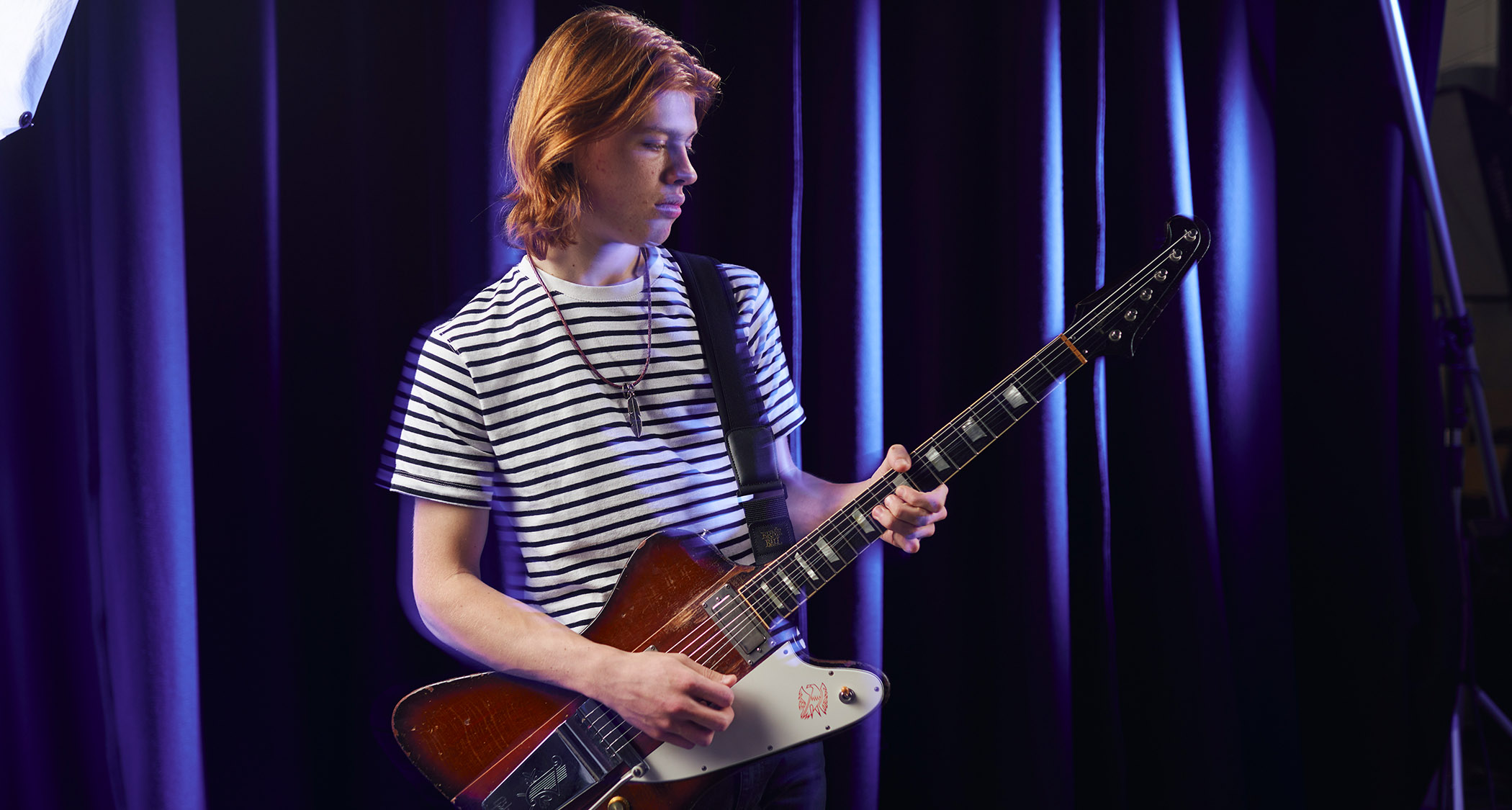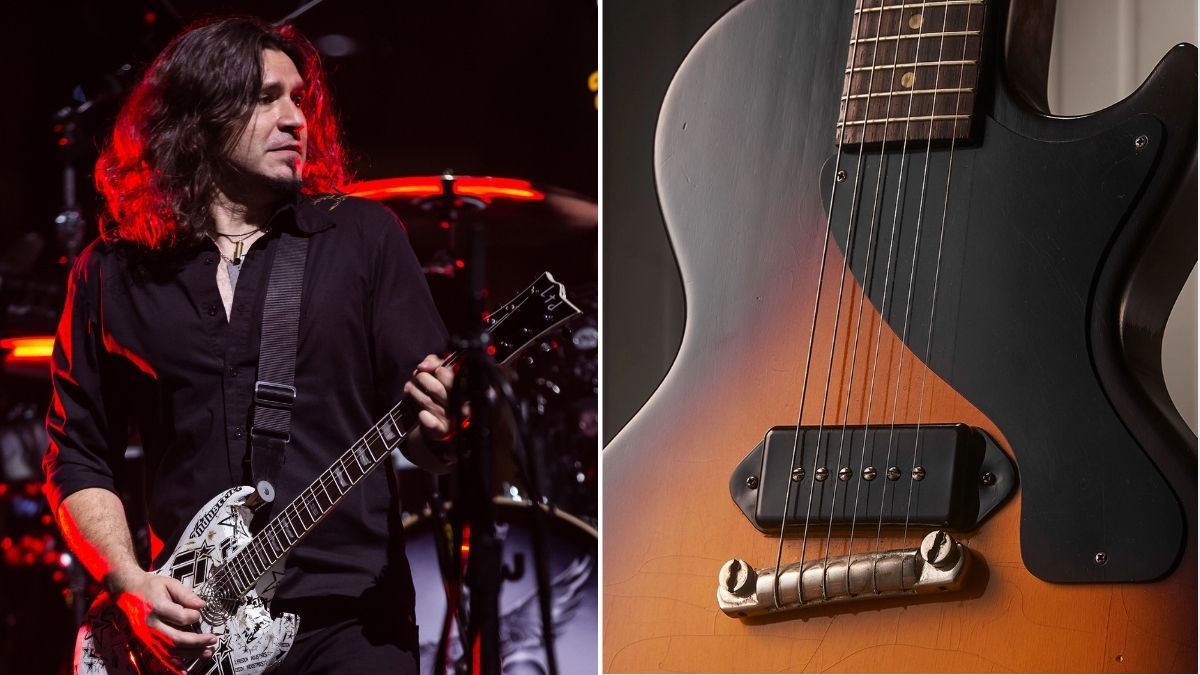Code Orange’s Reba Meyers: “Growing up, I never listened to guitar players other than myself. I just did my thing”
Just because Code Orange's new album is a remix doesn't mean the guitars aren't front and center. Here, Meyers unpacks the amp worship and pedalboard iconoclasm behind her crushing sound

In 2020, Code Orange’s fourth album Underneath was universally hailed as a metal landmark. Featuring some of the most brutal noises you’re likely to hear outside a war zone, it was in turns innovative, catchy and disturbing, with the band expanding beyond their hardcore roots with more industrial and electronic elements than ever before.
Frontman Jami Morgan called it “some of the hardest shit there is, period.” Now they’re pushing things a stage further with an album of remixes, titled What Is Really Underneath?
On the original album, guitarist Reba Meyers recorded herself making the most out-there noises she could imagine, before chopping them up into samples. Some of them were reversed, glitched, or pitch-shifted to sound even more messed up. “There’s so much to work with guitar-wise in the tracks,” she says. “The amount of layers was absolutely insane. There’s so many cool little things that you wouldn’t know were there – sounds you wouldn’t know necessarily if they were electronic or guitar.”
That huge library meant there was no need to record new guitars for What Is Really Underneath?. Instead, Jami Morgan and keyboardist Eric ‘Shade’ Balderose got creative with those sounds, leaning into the electronic and hip-hop influences that separate Code Orange from traditionalist hardcore.
“Shade had been doing a lot of remixes for other artists,” Reba explains. “We just wanted to create something that could live in a different world. Him and Jamie got basically obsessed over it and created the most insane remixes.”
Reba is right on all counts: listening to What Is Really Underneath? is a wholly different experience from its predecessor, and guitarists will frequently be unable to tell which noises are even guitars.
“I will let the listener use their imagination,” she smiles. “There’s a little bit more wonder involved in it. Although I love straight guitar-based music too, it’s cool to have a little bit of curiosity going on.”
Get The Pick Newsletter
All the latest guitar news, interviews, lessons, reviews, deals and more, direct to your inbox!
To create those sounds, Reba used a mixture of software plug-ins and pedals. The Soundtoys PhaseMistress, FilterFreak, and Decapitator plug-ins saw heavy action, but as she reveals, a lot of the noises come from the imaginative use of simple gear.
“The more crazy synthy stuff usually comes from in the box [plugins]. Just the AMT WH-1 wah in a certain context can sound pretty wild. It’s just a super-chill little guy but with different distortion pedals it can sound pretty insane. The Z.Vex Sonar is a tremolo pedal, but I just dime it and make the speed just basically super close together so it doesn’t really sound like a tremolo.
“It just sounds like weird, broken distortion. The Z.Vex Box of Metal sounds awesome with it, too. My Bananana Mandala glitch pedal linked with that stuff can sound pretty insane. We do a lot of glitch stuff in the box, too. We went pretty hard on that on Underneath.
Just the AMT WH-1 wah in a certain context can sound pretty wild. It’s just a super-chill little guy but with different distortion pedals it can sound pretty insane
“The other main one that’s insane-sounding is this MoogerFooger Ring Mod pedal,” she continues. “I just bounce around with a bunch of different stuff combined. The Ring Mod, especially with the wah, can sound pretty insane when you sweep it with really distorted guitar.
“It even sounds pretty weird when it’s not distorted. But I’m a firm believer that your hands are the most powerful tool. How hard you push and the way you use vibrato matters so much in terms of how pedals respond. One person can play with something and sound completely different, even on the same settings.”
Reba is currently deciding what her rig for the upcoming Code Orange tour will look like. “I have all kinds of ideas,” she says. “It’s definitely a dream of mine to have a multi-amp rig; we never really have the space but hopefully I can figure that out. I would love to use a Roland Jazz Chorus amp on tour for clean stuff.”
Though she hints at possible signature effects in the works, her current touring ’board has just six pedals. An ISP Decimator noise gate and Ibanez TS808 are always on.
She uses the Boss PS-6 Harmonist’s S-Bend mode to perform divebombs with her fixed-bridge ESP. The other pedals are Universal Audio’s Astra Modulation Machine, plus the aforementioned MiniFooger MF-1 and AMT WH-1 wah pedal. It all runs into an EVH 5150III EL34 head and EVH cabs, with an Axe-Fx III in the loop for digital effects.
Reba’s main guitar is still her signature ESP Viper tuned to drop B, but she’s already working with the brand on an update.
“We’re definitely gonna make an upgraded version because I love it so much,” she reveals. “I just want to do something wilder. We’re working out what’s possible. I’ve also always wanted a Tele-bodied guitar so I might go in that route.”
Although the signature ESP comes with an EMG 81 pickup, Reba has replaced that with a Railhammer Chisel in her gigging guitar, and what her next signature will contain is up in the air...
“I just like that the Railhammer’s a little less crunchy,” she says. “It has more warmth to it but it still sounds super-badass. I know EMG has a ton of different pickups, so they’ve sent me some stuff and I’m trying it all out. I still use the 81 live sometimes, but the Railhammers definitely have a really special sound. The Chisel and the Anvil are both awesome.”

With the 5150 set to crushing amounts of gain, intelligent use of noise gates is crucial to the Code Orange sound, especially given the band’s love of sudden silences between sonic blasts.
“They’re important, but it’s also important to know when not to use them,” Reba explains. “I’ll use it sometimes whenever a song is really tight. Other times I want that fucked-up natural feedback. It’s cool whenever you’re getting a really fat, huge sound and you just don’t need it. It’s crazy like how much you can do with that one thing.”
Their sophisticated use of gates separates the band’s current sound from their early efforts. As Reba recalls: “When we were younger, we were wilder in terms of accidental feedback until we learned how to gate. We were probably the last generation of kids who didn’t grow up with Google, so learning how to use pedals was just a crap shoot. You’d buy something used for $30, like a piece of shit that might even be broken. There was a lot of learning that wasn’t ‘proper’ because of that.”
Returning to the possibility of touring with multiple amps, she adds: “I re-fell in love with this old Fender Bassman. I feel like bringing that on the road is just a disaster waiting to happen but it’s freaking awesome when combined with other things.
“When we were really young we used to tour with the absolute craziest vintage amps. Looking back I’m like, ‘Shit, that’s so cool! Why did we stop?’ But in reality that stuff breaks on the road. It’s easier to bring more modern amps. The EVH stuff does sound awesome so I’m not complaining at all.”
If she wants to tour with a multi-amp rig without taking up extra space, it would seem the solution is already in her rig, in the form of the Fractal Axe-Fx III. Reba, though, is not keen to go all-digital.
“I’m sure I could have someone else do it for me, but whenever I do it I never think it sounds good,” she explains. “Maybe I’m not dialed in super-hard on the settings, but something about it just doesn’t inspire me. I really like using it to sound digital and for digital effects. You can make crazy things and I like using it more for that than I do for trying to match something that exists in the real world. I might wake up one day and sit with it for 10 million hours and get something cool and change my mind.”
Marshall was one of the first companies to ever hit us up. They sent us Joe Satriani JVM heads and those amps actually sounded really awesome, too
It’s a surprisingly old-school take for someone who made an album with chopped-up samples of digitally-manipulated guitar, but Reba still gets misty-eyed talking about valve amps.
“I would just love to be ripping a JCM800 at some point in my life. As a kid, I never gave a shit about them. Everyone and their mother was using them when I was growing up so it was almost a ‘Fuck you, I’m gonna use something else’ kind of thing. Marshall was like one of the first companies to ever hit us up. They sent us Joe Satriani JVM heads and those amps actually sounded really awesome, too. I like the British sound, so I would love to get that in the mix.”
She takes a balanced view on the creative potential of technology. “I’ve realised that sometimes that the idea is purer whenever you just totally don’t fuck with it, and just sit in a room and literally record the most basic thing, whether it be acoustic guitar and a voice or guitar and a drum machine. I’ll just let the idea just come out of me as fast as possible and as far as it wants to go.
“If I listen back a week or a month later and I’m like ‘that was sick!’ then I’ll fix it. Sometimes it’s cool to find a tone as a different way of writing. Then you’re inspired by that as opposed to an idea coming out of you from nowhere. The stuff that you’re conjuring out of the fucking ether is sometimes the absolute best stuff.”
When it comes to writing, Reba takes a similar blend of old-school and high-tech approaches, sometimes making demos from scratch on a laptop, and sometimes jamming with the band. “It is really valuable getting people working together. Hearing a drummer in the room or the bass player next to you blasting gives a sense of power and leads you to paying attention more to the rhythm and the power as opposed to the technicality of this and that stuff.”
Reba’s sound is defiantly original, but she says that a lack of obvious role models led her to finding her own niche. “Growing up, I never listened to guitar players other than myself. I just did my thing and played with my friends and learned from people around me.
“Later in life I was like, ‘Oh, holy shit – there’s so many great guitar players out there!’ As a kid I just didn’t know, and there were no females at all that I knew. When you’re different, you just decided to be internal as opposed to look outward for references. If you don’t really have anyone to look up to, you just look around you and naturally soak stuff in.”
- What Is Really Underneath? is out now via Blue Grape Music.
Jenna writes for Total Guitar and Guitar World, and is the former classic rock columnist for Guitar Techniques. She studied with Guthrie Govan at BIMM, and has taught guitar for 15 years. She's toured in 10 countries and played on a Top 10 album (in Sweden).











